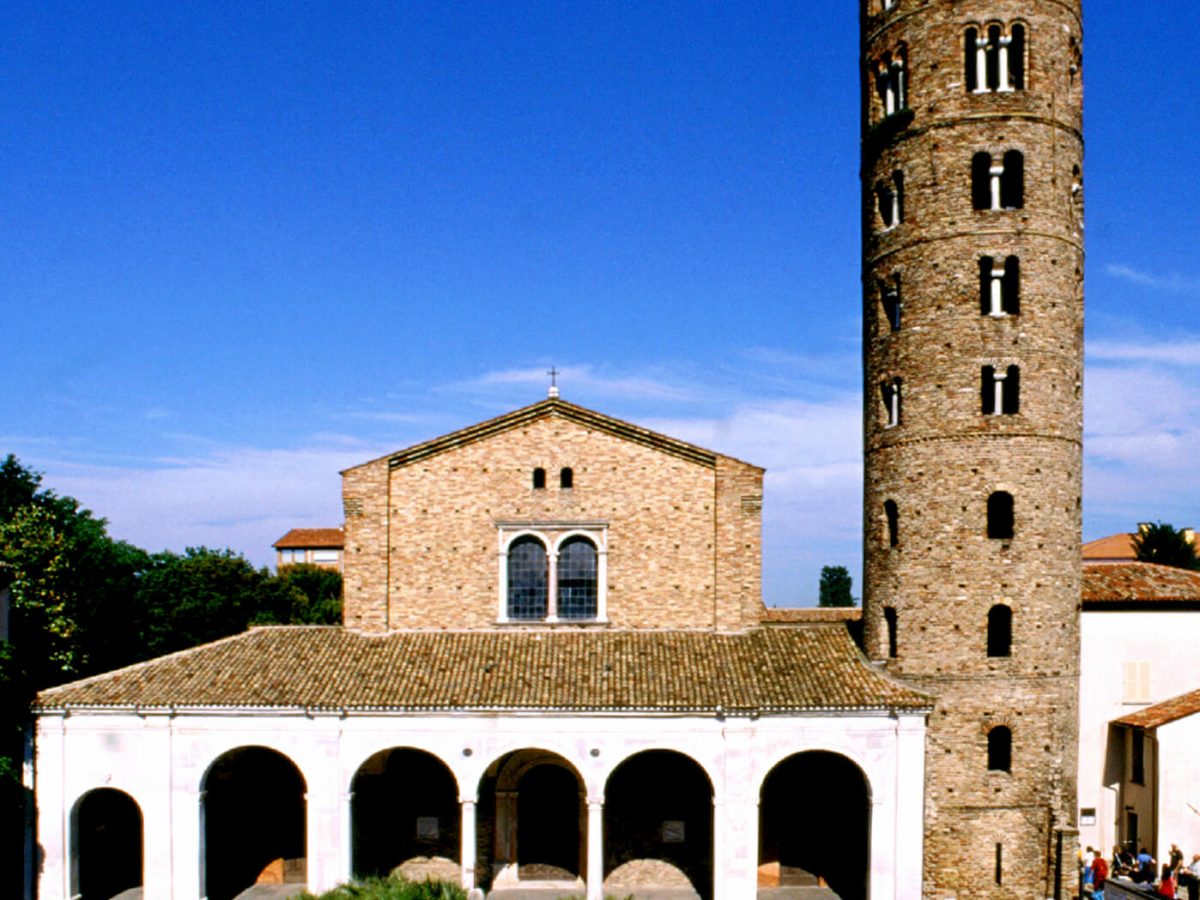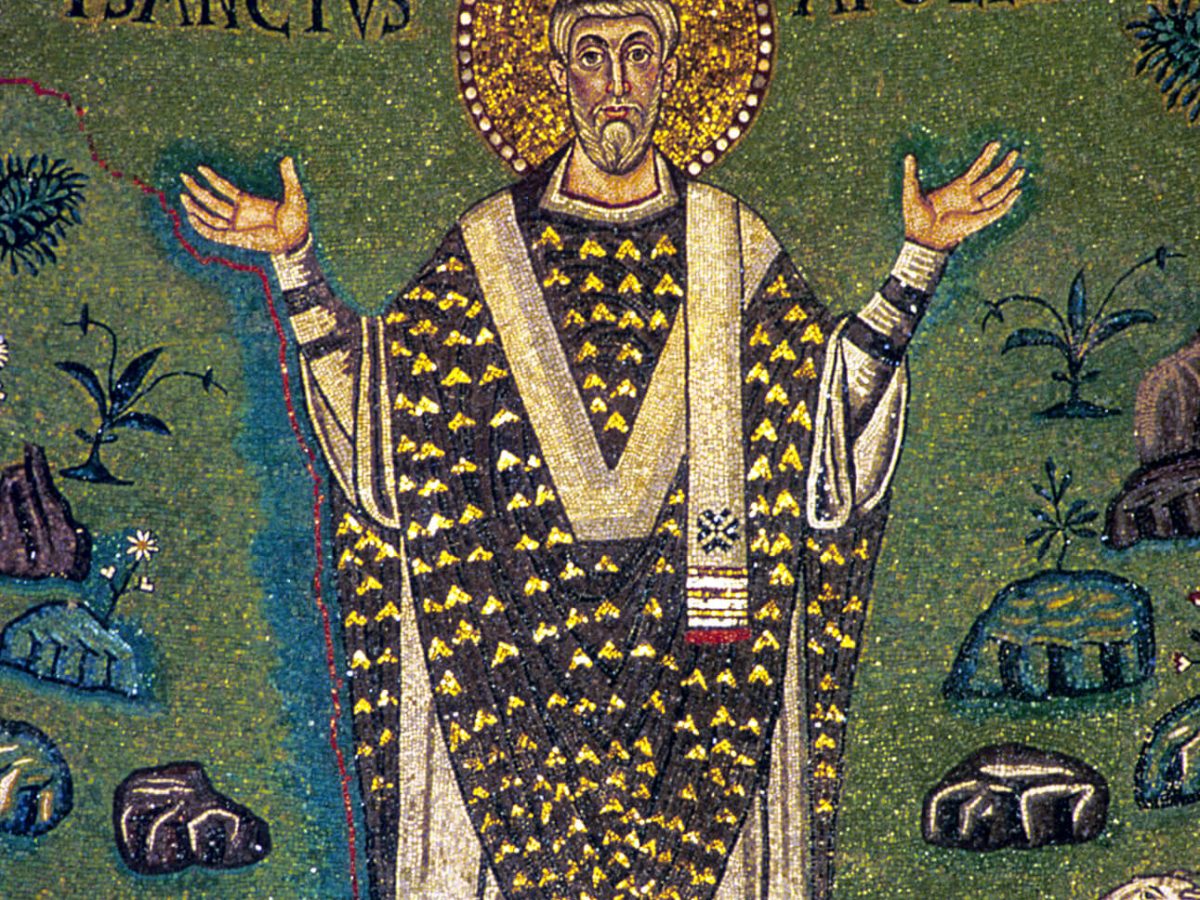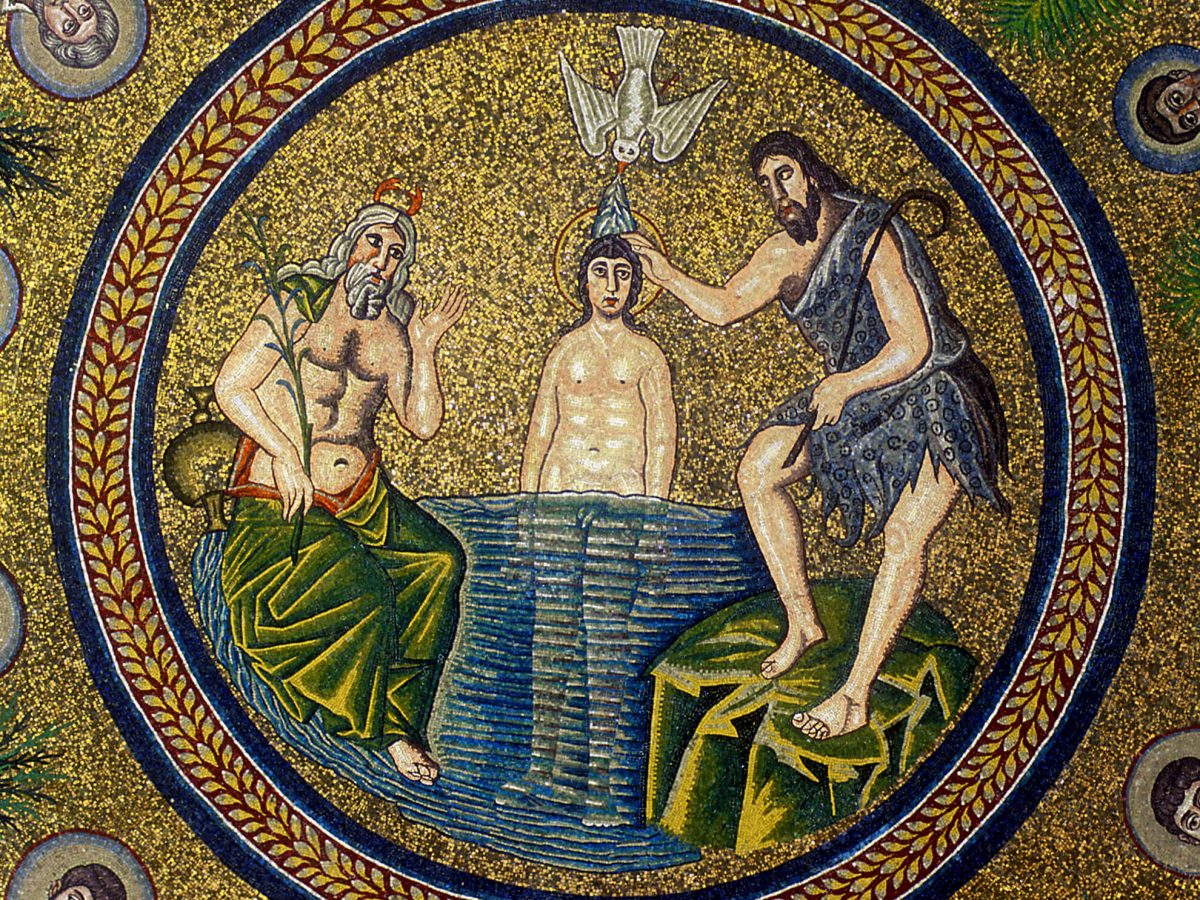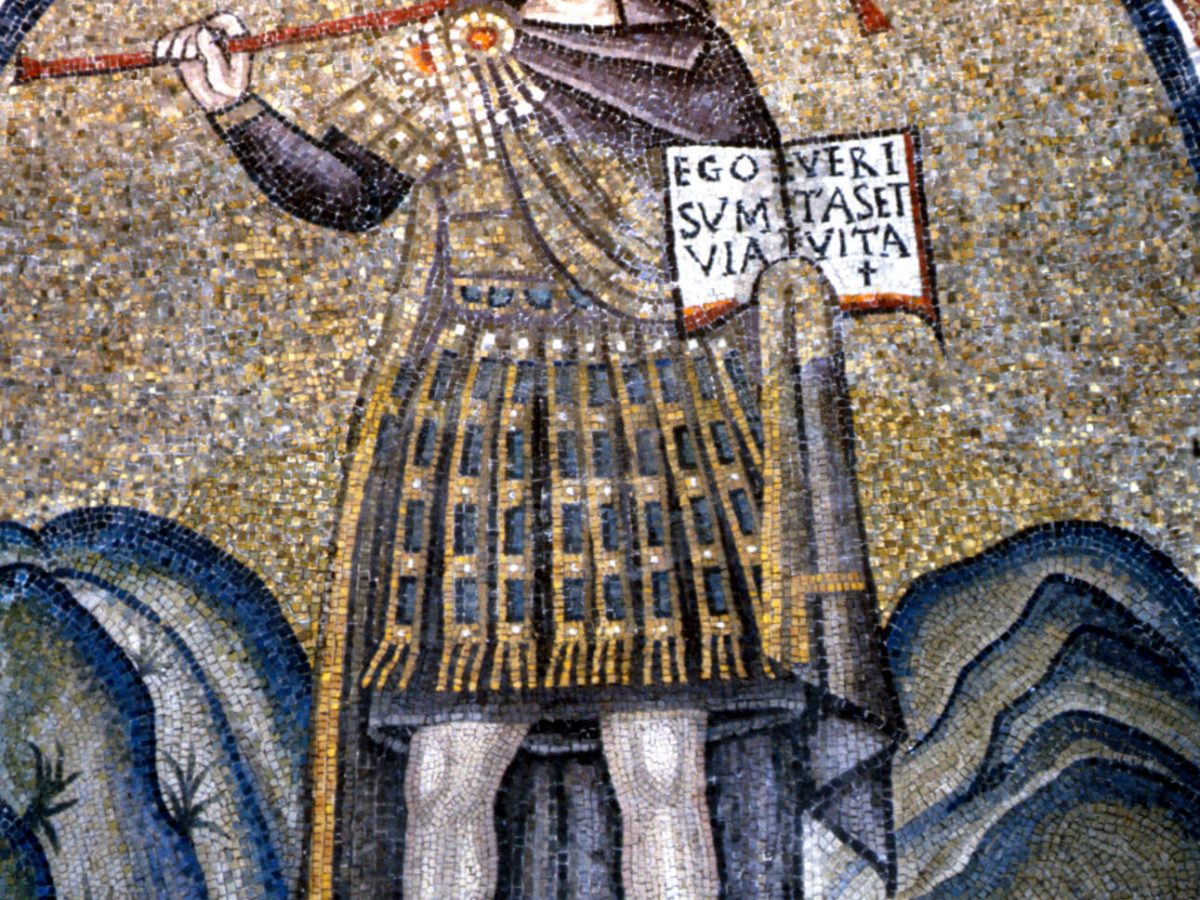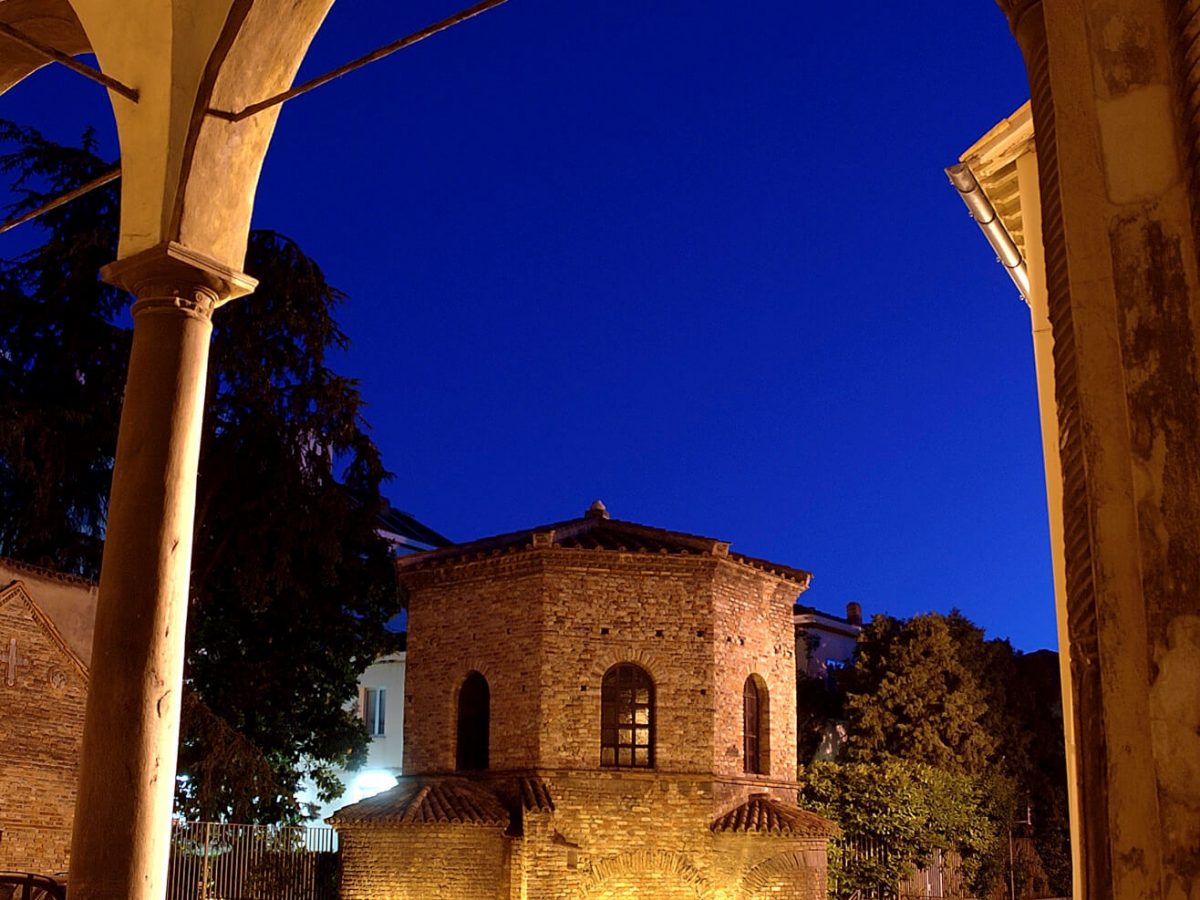The UNESCO Early Christian Monuments serial site in Ravenna consists of eight monuments – the Mausoleum of Galla Placidia, the Neonian Baptistery, the Basilica of Sant’Apollinare Nuovo, the Arian Baptistery, the Archiepiscopal Chapel, the Mausoleum of Theodoric, the Church of San Vitale and the Basilica of Sant’Apollinare in Classe – built between the 5th and 6th centuries AD. These religious monuments reflect the major historical, political and religious events that took place in Ravenna, the capital of the Western Roman Empire (AD 402), remained prominent as the Ostrogothic and then the Byzantine capital in Italy.
The Mausoleum of Galla Placidia, small but lavishly decorated inside with inspiring mosaics against a dark blue background, reflects the Western Roman architectural tradition. The Neonian Baptistery, ornate with its inlaid marble, stuccos and multi-coloured mosaics in the cupola, is the finest and most complete surviving example of an Early Christian baptistery. From the peak of the Goths’ reign, the Arian Baptistery preserves mosaics showing the baptism of Christ and iconographic details that reflect principles of the Arian faith. The Basilica of Sant’Apollinare Nuovo was also built during the reign of Theodoric as a Palatine chapel, with mosaics in traditional Roman style that also show a strong Byzantine influence. The Mausoleum of Theodoric is a unique and singular architectural work: constructed out of huge blocks of Istrian stone around a central space, it is the only surviving example of a tomb of a barbarian king of this period. The Archbishop’s Chapel, on the other hand, is the only orthodox monument built during Theodoric’s reign. The Basilica of San Vitale, from the time of Justinian, is one of the highest creations of Byzantine architecture in Italy, and combines elements of both the Western and Eastern tradition. Lastly, 5 kilometres from Ravenna we find the Basilica of Sant’Apollinare in Classe, imposing with its impressive forms, cylindrical bell tower, spacious interior and the richness of its marbles and mosaics.

